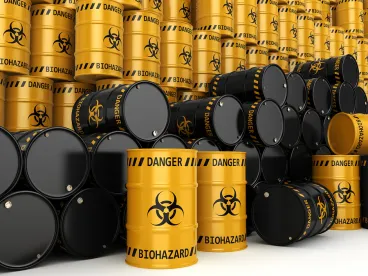EPA has taken another step in implementing the Toxic Substances Control Act (TSCA). It has announced the first set of 20 candidate chemicals for possible designation as high-priority substances and the first (possibly only) set of 20 candidate chemicals for possible designation as low-priority substances. 84 Fed. Reg. 10491 (March 21, 2019).
This signals the beginning of EPA’s prioritization process to determine whether the 20 candidates for designation as high-priority substances may present an unreasonable risk of injury to health or the environment under the conditions of use. If EPA makes that determination at the end of this prioritization process, EPA will designate those substances as high priorities for risk evaluations and will begin those risk evaluations. On the other hand, where EPA has sufficient information, it will designate a chemical substance that does not meet this standard as a low-priority substance and take no further action.
EPA is accepting initial comments on these 40 candidate chemicals until June 19, 2019. Under section 6(b)(2)(B), EPA must publish final high- and low-priority designations by December 22, 2019.
First 20 Candidate Chemicals for Designation as High-Priority Substances
EPA identified 7 chlorinated solvents:
-
p-Dichlorobenzene, CAS No. 106-46-7
-
1,2-Dichloroethane, CAS No. 107-06-2
-
trans-1,2- Dichloroethylene, CAS No. 156-60-5
-
o-Dichlorobenzene, CAS No. 95-50-1
-
1,1,2-Trichloroethane, CAS No. 79-00-5
-
1,2-Dichloropropane, CAS No. 78-87-5
-
1,1-Dichloroethane, CAS No. 75-34-3
It identified 5 phthalates:
-
Dibutyl phthalate (DBP) (1,2-Benzene- dicarboxylic acid, 1,2- dibutyl ester), CAS No. 84-74-2
-
Butyl benzyl phthalate (BBP) - 1,2-Benzene- dicarboxylic acid, 1- butyl 2(phenylmethyl) ester, CAS No. 85-68-7
-
Di-ethylhexyl phthalate (DEHP) - (1,2-Benzene- dicarboxylic acid, 1,2- bis(2-ethylhexyl) ester), CAS No. 117-81-7
-
Di-isobutyl phthalate (DIBP) - (1,2-Benzene- dicarboxylic acid, 1,2- bis-(2methylpropyl) ester), CAS No. 84-69-5
-
Dicyclohexyl phthalate, CAS No. 84-61-7
It identified 3 halogenated flame retardants:
-
4,4’-(1-Methylethylidene)bis[2, 6-dibromophenol] (TBBPA), CAS No. 79-94-7
-
Tris(2-chloroethyl) phosphate (TCEP), CAS No. 115-96-8
-
Phosphoric acid, triphenyl ester (TPP), CAS No. 115-86-6
Finally, it identified 5 other substances:
-
Ethylene dibromide, CAS No. 106-93-4 (a chemical intermediate)
-
1,3-Butadiene, CAS No. 106-99-0 (a monomer, regulated by OSHA as a carcinogen, 29 C.F.R. § 1910.1051)
-
1,3,4,6,7,8-Hexahydro-4,6,6,7,8,8-hexamethylcyclopenta [g]-2-benzopyran (HHCB), CAS No. 1222-05-2 (a fragrance chemical)
-
Formaldehyde, CAS No. 50-00-0 (a chemical intermediate, the subject of a controversial IRIS assessment, and regulated by OSHA as a carcinogen, 29 C.F.R. § 1910.1048)
-
Phthalic anhydride, CAS No. 85-44-9 (a phthalate precursor)
In identifying candidate chemicals for designation as high-priority substances, EPA looked to its 2014 TSCA Work Plan for Chemical Assessments. Section 6(b)(2)(D) requires EPA to give preference to chemical substances that are listed on the 2014 TSCA Work Plan that either: (a) have a persistence and bioaccumulation score of 3; or (b) that are known human carcinogens and have high acute and chronic toxicity. EPA included the hazard, exposure, and persistence/bioaccumulation scores from the 2014 TSCA Work Plan for each candidate chemical in the Federal Register notice as a basis for their selection. EPA also considered whether chemical substances were similar and whether there is existing EPA work or other publically-available risk assessments on these chemical substances.
Among the chemicals on the 2014 TSCA Work Plan that meet those preference criteria but were not included among the 20 candidates for designation as high priority are:
-
Arsenic and arsenic compounds (acute and chronic toxicity from inhalation exposures)
-
Cadmium and cadmium compounds (acute and chronic toxicity from inhalation exposures)
-
Chromium and chromium compounds (acute and chronic toxicity from inhalation exposures)
-
Cobalt and cobalt compounds (Persistence & Bioaccumulation Score of 3)
-
Lead and lead compounds (Persistence & Bioaccumulation Score of 3)
-
Long-chain chlorinated paraffins (C18-20) (Persistence & Bioaccumulation Score of 3)
-
Medium-chain chlorinated paraffins (C14-17) (Persistence & Bioaccumulation Score of 3)
-
Molybdenum and molybdenum compounds (acute and chronic toxicity from inhalation exposures)
-
Nickel and nickel compounds (acute and chronic toxicity from inhalation exposures)
-
Octamethylcyclotetrasiloxane (D4), CAS No. 556-67-2 (Persistence & Bioaccumulation Score of 3)
-
Pigment Yellow 83 (Butanamide, 2,2’-[(3,3’-dichloro[1,1’-biphenyl]-4,4’-diyl)biz(azo)bis[N-(4-chloro-2, 5- dimethoxyphenyl)-3-oxo-), CAS No. 5565-15-7 (Persistence & Bioaccumulation Score of 3)
As part of the prioritization process, EPA is required to consider, without consideration of costs or nonrisk factors, whether a candidate chemical may present an unreasonable risk of injury to health or the environment because of a potential hazard and a potential route of exposure under the conditions of use. EPA must designate a candidate chemical as a high-priority substance if it concludes that it may present an unreasonable risk. Once EPA designates a chemical substance as a high-priority substance, it must initiate a risk evaluation for such chemical substance. See TSCA section 6(b)(1)(B)(i); 40 C.F.R. Part 702, Subpart A.
EPA’s prioritization designation is not a risk finding. Designating a chemical substance as a high-priority substance does not mean that the substance presents an unreasonable risk, but rather that the chemical substance may present an unreasonable risk and therefore warrants a risk evaluation. 40 C.F.R. § 702.17.
First 20 Candidate Chemicals for Designation as Low-Priority Substances
EPA identified the following list of candidate chemicals for designation as low-priority substances:
-
1-Butanol, 3-methoxy-, 1-acetate, CAS No. 4435-53-4
-
D-gluco-Heptonic acid, sodium salt (1:1), (2.xi.)-, CAS No. 3113-65-5
-
D-Gluconic acid, CAS No. 526-95-4
-
D-Gluconic acid, calcium salt (2:1), CAS No. 299-28-5
-
D-Gluconic acid, .delta.-lactone, CAS No. 90-80-2
-
D-Gluconic acid, potassium salt (1:1), CAS No. 299-27-4
-
D-Gluconic acid, sodium salt (1:1), CAS No. 527-07-1
-
Decanedioic acid, 1,10-dibutyl ester, CAS No. 109-43-3
-
1-Docosanol, CAS No. 661-19-8
-
1-Eicosanol, CAS No. 629-96-9
-
1,2-Hexanediol, CAS No. 6920-22-5
-
1-Octadecanol, CAS No. 112-92-5
-
Propanol, [2-(2-butoxymethylethoxy)methylethoxy]-, CAS No. 55934-93-5
-
Propanedioic acid, 1,3-diethyl ester, CAS No. 105-53-3
-
Propanedioic acid, 1,3-dimethyl ester, CAS No. 108-59-8
-
Propanol, 1(or 2)-(2-methoxymethylethoxy)-, acetate, CAS No. 88917-22-0
-
Propanol, [(1-methyl-1,2-ethanediyl)bis(oxy)]bis-, CAS No. 24800-44-0
-
2-Propanol, 1,1’-oxybis-, CAS No. 110-98-5
-
Propanol, oxybis-, CAS No. 25265-71-8
- Tetracosane, 2,6,10,15,19,23-hexamethyl-, CAS No. 111-10-3
EPA explained that the selection of candidate chemicals for designation as low-priority substances was based on low hazard, as the initial criterion. EPA also looked at whether these chemical substances have been evaluated by EPA or other governmental bodies from OECD member states. EPA relied on its Safer Chemicals Ingredients List and Chemical Assessment Management Program (ChAMP) as sources of chemical substances that have already been evaluated to some degree.
Under section 6(b)(1)(B)(ii), EPA will designate a chemical substance as a low-priority substance if EPA concludes, without consideration of costs or other nonrisk factors, that the substance does not meet the standard for designating a chemical substance as a high-priority substance (i.e., that the chemical substance may present an unreasonable risk of injury to health or the environment because of a potential hazard and a potential route of exposure under the conditions of use). Notably, EPA must have sufficient information upon which to make this determination.
If EPA designates a chemical substance as a low-priority substance, EPA’s review of the chemical substance ends. However, EPA can reevaluate a low-priority substance if new information regarding the chemical substance comes to light that calls into question its designation. Section 6(b)(3)(B); 40 C.F.R. § 702.13.
If EPA finds that the chemical substance may present an unreasonable risk or the Agency does not have sufficient information to make this determination, EPA must designate the candidate chemical as a high-priority substance and conduct a risk evaluation on the chemical substance. Therefore, it is important that manufacturers and processors of these candidate chemicals provide information to EPA to ensure that EPA has sufficient information upon which to base its decision.
The Prioritization Process and Next Steps
Section 6(b)(2)(B) requires EPA to ensure that risk evaluations are being conducted on the first 20 high-priority substances no later than December 22, 2019 (i.e., three and a half years after enactment of the Frank R. Lautenberg Chemical Safety for the 21st Century Act). EPA must also designate at least 20 low-priority substances by December 22, 2019.
EPA is providing a 90-day comment period for stakeholders to submit information regarding these 40 candidate chemicals. Companies with an interest in any of the candidate chemicals should consider submitting comments and information to EPA.
During the prioritization process, EPA must conduct a risk-based screening of the candidate chemicals that considers their hazard and exposure potential, conditions of use or significant changes in conditions of use, and manufacturing or processing volumes or significant changes in such volume. EPA will then publish a proposed designation for each candidate chemical as either a high- or low-priority substance. This must set forth the information, analysis, and basis for EPA’s proposed designation. EPA must provide 90 days for interested stakeholders to comment on proposed designations. Once EPA has considered comments on proposed designations, EPA will designate each chemical substance as a high- or low- priority, and begin risk evaluations for all high-priority substances.
EPA must issue proposed priority designations no later than September 22, 2019, in order to meet its December 22, 2019, statutory deadline to designate 20 high- and low-priority substances, but will likely need to do so well before this deadline to consider comments received on the proposed designations.





 />i
/>i

